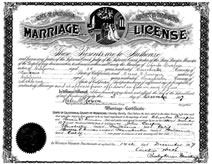Beyond the InkFrequently what we see written on our music page is wrong! It could be because of misplaced dynamics, incorrect articulations, wrong notes, or any number of other reasons. The fact is, though, that much of our repertoire is printed with errors, and sadly many players are afraid to play anything other than what’s printed even though they have done the research to know what’s really correct. They’re afraid because they fear that members of some panel of competition judges, members of a symphony orchestra’s audition committee, the jury of conservatory examinations or even their teachers are ignorant of the incorrect print, and that they will be judged negatively for playing what they know is correct! This is a very sad state of affairs.Several years ago I had a student who had a serious problem in playing the music correctly, in fact one could say he was seemingly a disaster. He simply could not play any scale, arpeggio or anything else without missing a huge amount of notes. It was immediately clear to me that he had some kind of a serious problem and that I would have to find a workable practice technique that would help him as much as possible; then he asked if he could play some things by memory; suddenly he played beautifully. Now it was time for a serious talk! “How is it possible you can play so beautifully by memory and have so many problems reading music?” His answer was that he suffered from a very severe case of dyslexia. Then came the rest of the story: As a young boy, clearly with a serious learning disability, he was placed in a special school for retarded children. It took 4 years before they discovered their mistake and found that he had an IQ that put him in the genius category! His story during those 4 years is a beautiful one and certainly would be something wonderful to read just on its own. He knew he was different, he loved his schoolmates, and he learned how to help them. But the most poignant thing is that he had to learn how to not appear different from the rest of the kids in order to stay out of trouble! Is it possible that we tubists, and perhaps brass players in general, are somewhat in the same situation when faced with having to play down to uninformed listeners?! The Vaughn Williams Concerto, for example, is full of mistakes: mistakes in articulation, dynamics, phrasings and notes. Fortunately the word is out and most tubists and teachers are aware of the misprints. But what happens if we play Vaughn Williams for someone in a judgmental capacity that is ignorant of these misprints? A week ago during tuba exams at the Conservatoire de Lausanne in Switzerland, one of the “experts” (judges) criticized a student for deviating from the text particularly regarding articulation; I quickly explained to him the history of those articulations and he quickly withdrew his criticism. That was an easy resolution of the situation; sometimes it’s not that easy!
The Vaughn Williams Concerto is one of our major works and how it has become so full of both numerous mistakes and controversial editings could and should be discussed in an article dedicated exclusively to that. For now let’s just say that the original score that used to be on rental is far different than the one that is available today, particularly regarding articulation, and when these original articulations are used most people agree it simply sounds better. Then how did these other articulations come to be printed? According to the Oxford University Press; Vaughn Williams very much wanted the phrasing and articulations to be in a style that was idiomatic for the instrument and the performer. He therefore allowed Philip Catilenet, the man who played the world premiere in 1954, to make the phrase and articulation decisions for the published edition. Now Mr. Catilenet’s markings are in print and therefore we have an edition with the performance ideas of a man 50 years ago. Tubists are better today; the British Brass Band style of 50 years ago no longer serves well this fine concerto. And if Vaughn Williams allowed the performer to make the phrase and articulation decisions then, I’m sure he would prefer that they have the same freedom today; certainly most great tubists would not like to be frozen in one mans opinion from half century ago. On a personal note I have my students learn the Vaughn Williams Concerto 4 ways: 1. The Oxford University Press edition from 1954, 2. The phrasing and articulation from the manuscript that used to be the rental score, 3. The personal phrasing and articulations that have evolved during the some 70 performances I’ve made of this work And 4. After a student can play it the first 3 ways I give him or her a copy with no markings at all and let the student make the decisions just like Catilenet did 50 years ago; usually the results are beautiful.
In a rehearsal Stokowsky asked the 2nd bassoonist to play a little softer. 2nd bassoonist: My dynamic is mezzo forte, would you like it to be mezzo piano, piano, or softer? Stokowsky: Are you married? 2nd Bassoonist: (confused) a… yes Stokowsky: May I see your marriage license please? 2nd Bassoonist: (more confused) a…. I don’t have it with me. Stokowsky: Well, have you read it? 2nd Bassoonist: (really confused) a… um…. I think so, a long time ago. Stokowsky; Well, did it tell you everything? That story says it so well; there’s a lot more to learn and perform that just what we see printed. Enjoy it. Jerusalem, Israel - March 17, 2005. |



 The idea of personal music interpretation is beautifully stated in a story
about the great conductor (and humorist) from the first part of the last century,
Leopold Stokowsky:
The idea of personal music interpretation is beautifully stated in a story
about the great conductor (and humorist) from the first part of the last century,
Leopold Stokowsky: